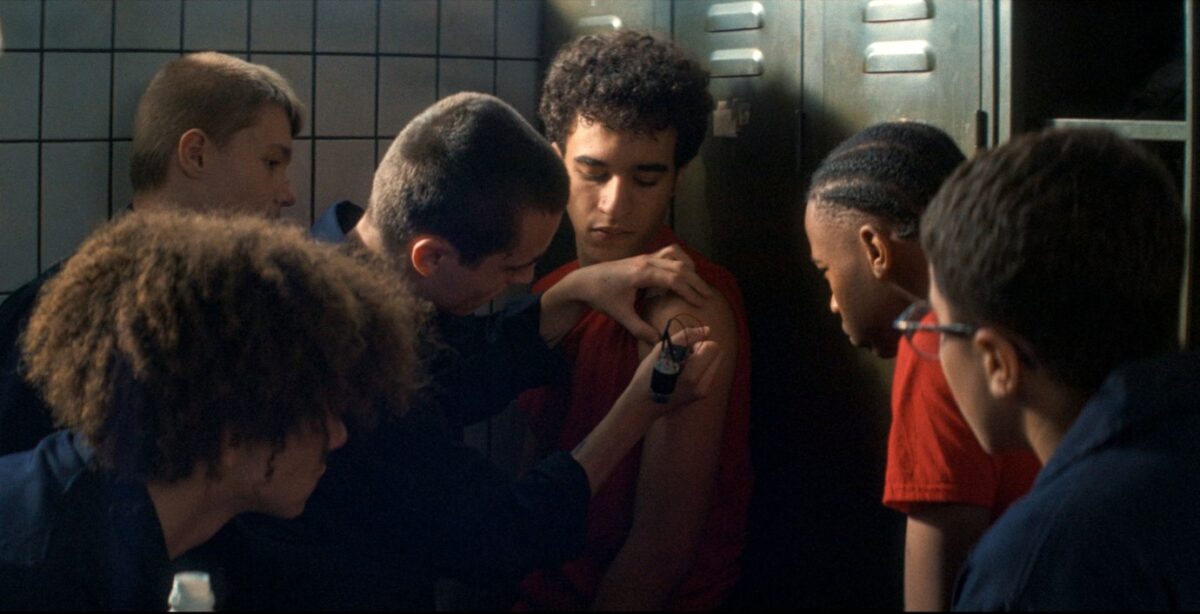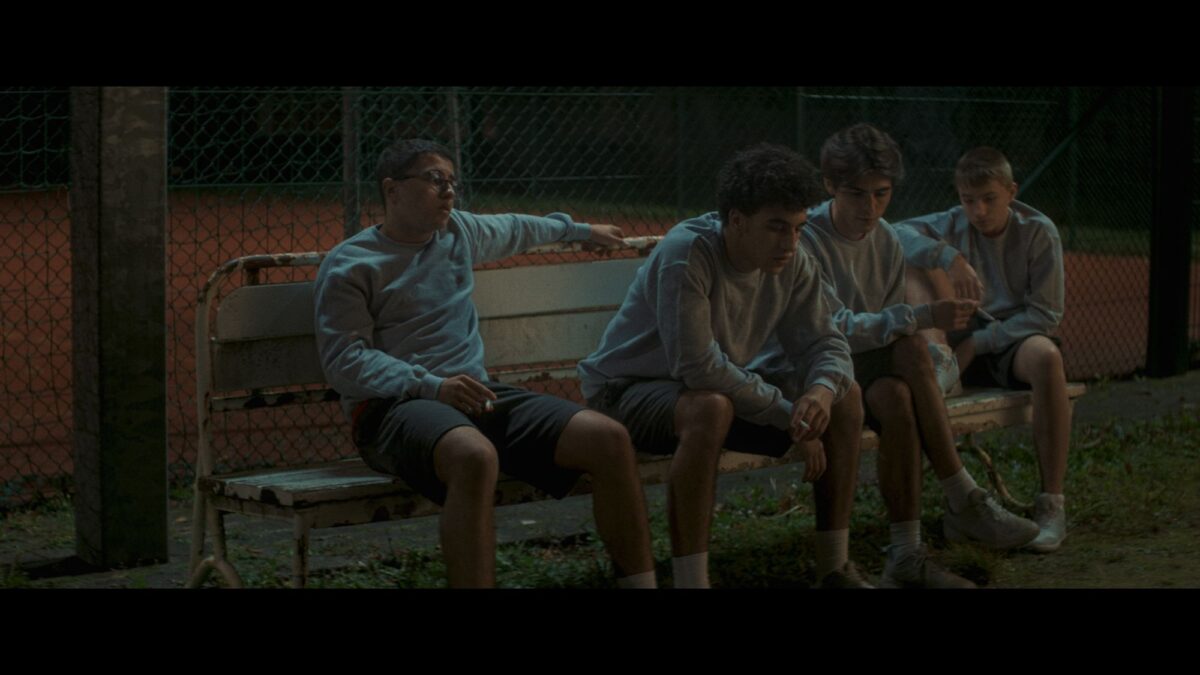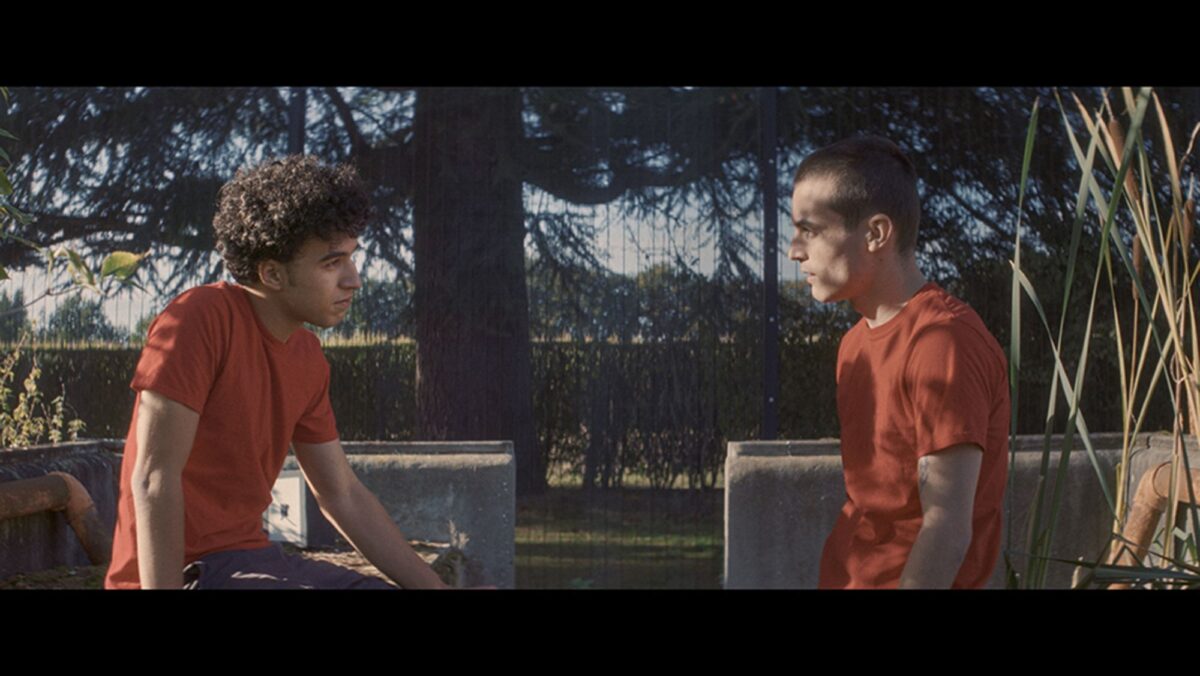Olivier Boonjing and his approach for Le paradis.

Stunningly captured by Olivier Boonjing SBC, Zeno Graton’s debut feature film Le paradis explores the relationship between teenagers William and Joe at a juvenile detention centre in Belgium.
“I first met Zeno at film festivals and through mutual friends a couple of years ago,” says Boonjing. “We spoke about how to approach making a film. He was very keen on having a lighter approach in terms of equipment, so he could focus more on characters, but at the same time he wanted something very visual. I met him and we spoke a lot about our filmmaking and he offered for me to work with him and we started prepping. Usually, how it works in Belgium is you meet people and maybe a couple of years later a project forms, so it’s a very natural process.”

During their initial conversations about the look of the film, Graton already had in mind that he wanted to make a film that was not just realistic, but he wanted to make a fable, something that would be openly romantic. “Of course, because of the location it would feel very restricted, but he wanted to put energy into it and he wanted movement,” adds Boonjing. “Even if the context is harsh, he wanted to make something openly positive. There was a dispense about making something real, otherwise the story would not feel grounded enough. We would call it hyperrealism in a way, in the sense that we would take something realistic and push it a little bit further.”
Working with a director with a background in cinematography proved to be particularly liberating for Boonjing. “Zeno studied cinematography at film school. Later, he pursued a masters in directing. He knows cinematography very well. He really thinks in terms of visuals, so that made the process very precise in a way. We sat down and built the film in a very precise shot list. The visual narration of his film was very constructed. It was really very easy to speak with a director who has so much knowledge about images because you don’t really have to translate things into other words. He’s still shooting music videos and so he isn’t disconnected from the practical aspects. That also helps a lot because a first feature film doesn’t have an infinite budget. To have a director who also understands practical aspects of filmmaking and logistics and where to put your budget in terms of image budget, it was both an open conversation and at the same time easy to handle the practical aspects of it.”

Graton visited several detention centres during the writing period, which helped with scouting for a detention centre to use. “We were lucky to find the centre quite early on and they were really open about the practical aspect of shooting there because the building that we used was not used,” explains Boonjing. “They were planning to renew it and use it and they agreed to postpone the work a little bit so we could shoot there. They completely included the film shoot in the educational process of the centre. They really allowed us to come and spend time there and that helped a lot. It’s a really nice centre and the young people who were in the centre could visit the set and the whole process. The actors would talk with them and explain what we were doing. It was a nice exchange. The film was well produced and we had access to everything we needed.”
When it came to references Boonjing and Graton discussed Son of Saul and Happy Together. “We also looked at a Jean Genet film, which had two people in two different cells communicating through a wall, also in a romantic and poetic way. Of course, The 400 Blows was a reference too, with the people running and the pure energy of that film”, says Boonjing.

In the early stages of planning, Boonjing and Graton discussed the use of close-ups. “The amount of close-ups was decided very early on. The locations are very plain and everything is very square and there isn’t much texture and that aspect is very close to what the real place is. Zeno wanted to balance this by using a lot of things that would bring the movie towards a more sensual feel,” notes Boonjing. “We knew in the film that there would be lots of group shots to really link characters in all that space. To balance that in the relationship of William and Joe, we would want to go closer to another sphere of intimacy. That was decided early on. That made choosing types of lenses over others to make those close-ups.”
Boonjing selected old Technovision Zeiss anamorphic lenses to capture the film. “There were lots of films that were shot on vintage anamorphic lenses in the modern references that Zeno showed me. It would add a layer of disconnection with reality because of the distortion and the way it blurs the background. We knew because the spaces were very plain that anamorphic would bring a little bit of flair to those locations. Finding vintage anamorphics on that type of budget is not always easy and there aren’t that many options in Brussels. I contacted TSF, as I know Florent Kirkpatrick who manages the Belgian part of TSF. A couple of months previously, they had bought a set of old techno vision Zeiss anamorphic lenses. They were custom lenses from the 70s. They were used by Vittorio Storaro on Apocalypse Now. It was at the same time practical in terms of mechanics and weight and we also got the look we wanted, so we were very lucky. I can only thank TSF and Florent for allowing us to use those lenses, as they are properly unique. They really completed the look we had in mind. We tested spherical lenses as well and more modern anamorphics, but that wouldn’t have worked as well.”

The film was shot over a period of 34 days, with the camera obscura sequence proving particularly challenging to shoot. “We studied different options to make that scene. We had to make the room a real camera obscura room, to enable the actors to be able to interact with it. We also knew we had to build a real one for the magical aspect of it,” explains Boonjing. “The art director prepared one and they measured everything and it worked really well. Unfortunately for us the weather conditions were not great. The effect was working, but it was really dim, even to the naked eye. We thought of using a slide projector. A digital projector wouldn’t have worked because you could see the pixels. We thought of using a high-resolution medium format slide projector, but then it would lack movement and you could feel the lack of movement even if it was subtle. I had previously used a still photo camera called a Panasonic S1H on another feature film as the main camera. I knew that if I could actually see something by pushing up the ISO on that camera and using a fast lens, I could possibly film it. So, we did some tests and that’s what we ended up shooting. We used a 50mm 1.2 Canon FD vintage spherical lens. We waited for a day with better weather conditions and then we shot it for real. That scene was very important in the script, but it was extremely difficult to think that we could film something that dark, where the only light source was a little hole about 1.1cm wide. It was still underexposed, so we had to de-grain everything and it’s still on the edge of what is possible. That was fun to do because you have created an atmosphere, so the actors had to interact with that context and it worked really well. We had this really magical aspect on set and we still managed to capture it. Even just a light on the monitor brings too much light into the room and so you must completely cover it. It was a bit awkward, but it worked out.”
Boonjing and his team took a more natural approach when it came to lighting. “It’s not completely natural light, but we knew from the very beginning that our lighting package and our crew were going to be quite minimal. For me, it’s about choosing the right approach. Our biggest light source was an M18, so it’s not a lot of light, but it was enough. The main windows were facing north so we had very stable light, even if we didn’t have much, even in Winter. We could use the M18 to just bring in touches of light. That meant that we also needed a light sensitive camera, so that’s why we went with the Sony Venice. We used a second 2500 ISO quite a bit and pushed it even further to 5000 for some sequences. You discover what’s possible when you have a very light sensitive camera and it’s great to have a cinema camera that nearly reaches the same level of sensitivity.”

When it came to capturing the black and white photographs, Pauline Beau, the first camera assistant was at the helm. “She does a lot of still photography, so I thought it would be nice for her to do it,” adds Boonjing. “She shot those pictures with a Panasonic S1H and a pinhole “lens”. That camera is very light sensitive and she could push the ISO very high up and so it created this grainy and imperfect image that we pushed a little further in post. We could check the pictures on set, which really helped. It was a sequence that was written like that in the script, so we knew that we had to have a certain rhythm in the edit.”
“Overall, I know it might sound a bit cliché, but I really had a lot of fun on this film,” concludes Boonjing. “Zeno wanted to have this feel that this bunch of guys became like a family and this family aspect really went further to the whole team, so it was a very nice project to work on. Everyone was really nice to each other. There was a nice mix of people too and some were from Brussels, some from France and they really became a group of friends. It’s fun to see now that they are going to premieres and still forming this group and having fun together.”
By Oliver Webb

